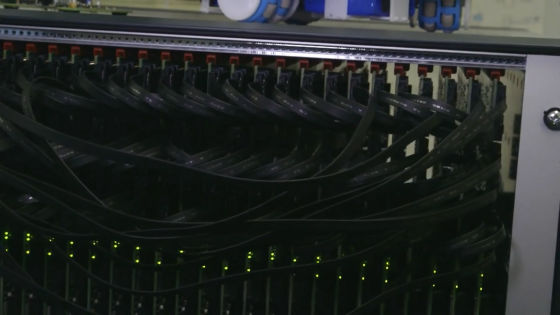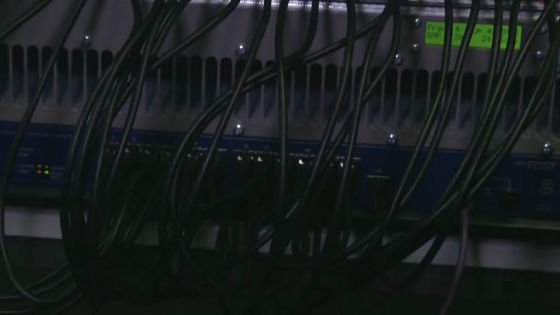Approach the reality of the large-scale computer environment "SpiNNaker" system supporting the human project "Human Brain project" for elucidating the human brain
"Human Brain Project"(HBP) continues from 2013 with the aim of" to elucidate the human brain and create the brain on the computer "Interdisciplinary researchIt is a project. That subproject "SpiNNaker"The project is a large scale to simulate the workings of the brainParallel ComputingIt is the environment, 1 billion piecesNeuronIt is intended to simulate a network composed of two nodes. YouTubeComputerphileWhen you see a movie posted on the channel, you can better understand the mechanism of "SpiNNaker" system.
Research Groups: APT - Advanced Processor Technologies (School of Computer Science - The University of Manchester)
http://apt.cs.manchester.ac.uk/projects/SpiNNaker/
Silicon Brain: 1,000,000 ARM cores - Computerphile - YouTube
"SpiNNaker"Spiking neural networkIn order to realize the architecture, in the future to realize brain modeling in real time,ARMIt's to build a machine that can carry 1 million processor cores and simulate 1 billion neurons, "said Steve Furber of the University of Manchester. It is also known as the pioneer who first developed the ARM architecture which is also used for iOS and Android smartphones.

"SpiNNaker" occupies a 19-inch rack in a common data center. The size of this rack is a very common size of about 2.2 m in width, 1 m in depth, and about 1.8 m to 2.1 m in height. About one hundred thousand ARM processor cores are running in this rack, it is said that it can constitute a network of the same size as the brain of one mouse.

"SpiNNaker" has a very reasonable design. There are 18 cores per processor and 48 processors on an A4 size board. Then, about 1000 on one boardorderIt is possible to process the core of the unit. further,Rack mountSince 24 cardboards are loaded in the card frame for use, and five are loaded in the rack, it is calculated that about 100,000 ARM processor cores are operating per rack.

This is the "SpiNNaker" board, and 48 chips are arranged on the board. There is a high-speed connector on the side of the board, and it is possible to construct a large-scale system by connecting multiple boards in parallel.

The card frame for rack mounting on the desk has 24 "SpiNNaker" boards and is connected in parallel, so this one has about 20 thousand ARM processor cores installed .

Looking at the top, the boards are all fastLinkIt is connected with.

The lower partNetwork switchThroughEthernetIt is connected with ......

I load the software on the robot equipped with this "SpiNNaker" board and use it for testing.

This is the "SpiNNaker" system with 100,000 ARM processor cores. There are five card frames in the rack ... ...

Since it is connected via Ethernet,Remote controlIt is possible.

There may be people thinking that more boards can work with more than one processor core if stuffing between boards, but there is some space for cooling. Although the "SpiNNaker" board is designed to not raise the temperature, it is not possible to install the board completely in close contact.

I think that some people have the recognition that "SpiNNaker" is a large-scale parallel computer in the past. If it is as usual, programmingprocessIt will be in a form to describe. However, since "SpiNNaker" aims to simulate brain models in real time,Event driven type programming modelIs adopted. In other words,NeuronHas arrived "and other eventstriggerAs "what are you doing?" "When this input is donespikeDid you do it? "This means that the brain will actually be able to simulate the movement of how the brain accepts signals from sight, olfaction, and hearing.

The design goal of "SpiNNaker" is to model about 1,000 neurons per core of the ARM processor in real time, so we have successfully modeled 256 per core at this time. It may feel that only 25% has been achieved, but now it is possible to achieve the goal if this is over at the adjustment stage of the software.

Related Posts:








